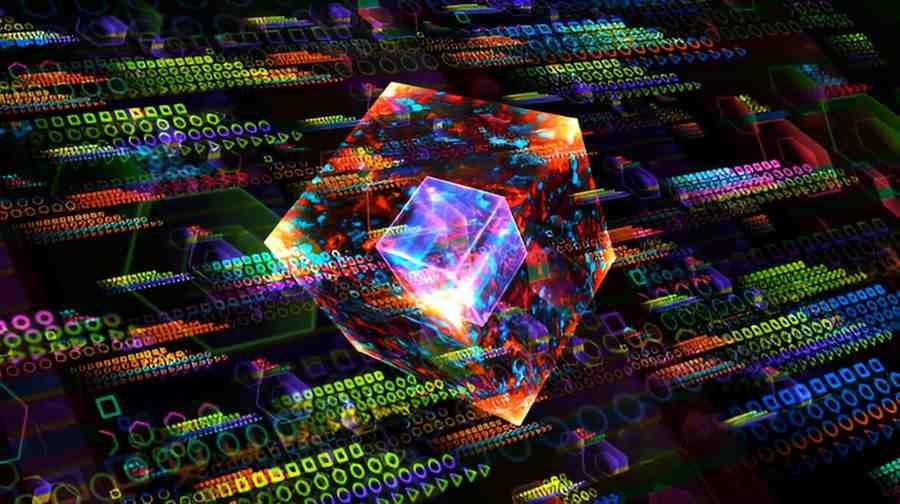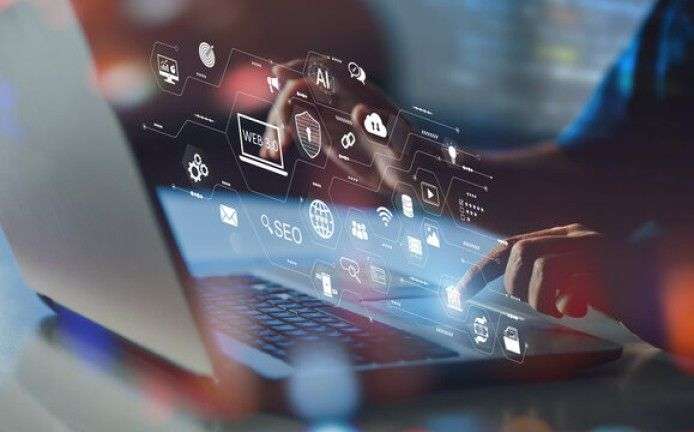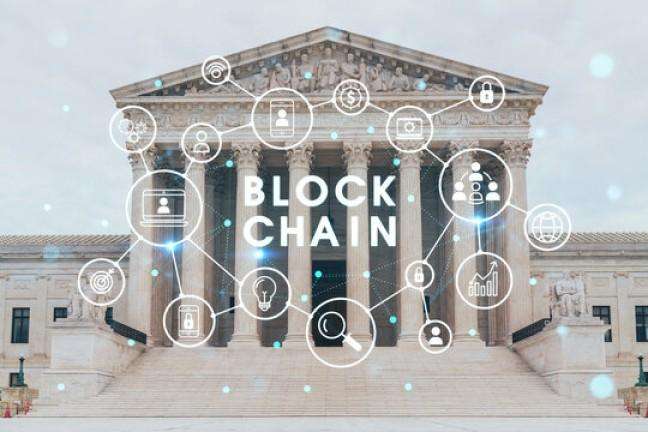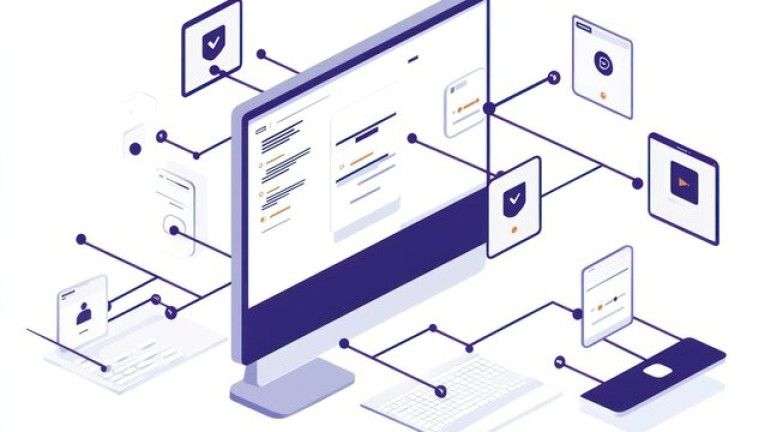In the rapidly evolving world of cryptocurrency and blockchain technology, the Abracadabra blockchain stands out as an innovative concept with the potential to reshape how we think about digital assets and decentralized finance (DeFi). I’ve spent considerable time delving into its mechanics, and I’d like to walk you through my exploration of its features, use cases, and the impact it could have on the broader financial landscape. In this article, I aim to break down what makes the Abracadabra blockchain unique, compare it to other blockchain technologies, and offer insight into its potential benefits and challenges.
Table of Contents
What Is the Abracadabra Blockchain?
At its core, the Abracadabra blockchain is a decentralized finance (DeFi) platform that focuses on enabling the creation and management of synthetic assets. These are financial instruments that represent real-world assets, such as commodities, stocks, or even currencies, but are traded in the digital space. The main goal of the Abracadabra blockchain is to bring traditional finance and the world of cryptocurrencies closer together.
Unlike traditional centralized finance systems, which rely on intermediaries such as banks and financial institutions, Abracadabra operates in a decentralized manner. This means that users can access financial products without relying on third parties. The system is powered by smart contracts, which automatically execute transactions based on predefined conditions.
Key Features of Abracadabra Blockchain
To understand the full scope of what Abracadabra can offer, it’s important to look at some of its key features:
- Synthetic Assets: Synthetic assets are central to the Abracadabra ecosystem. These assets are designed to mirror the value of real-world assets without the need for physical ownership. For example, a user can trade a synthetic version of gold or the stock of a company, allowing exposure to these assets without the complexities of physical trading.
- DeFi Integration: By integrating with existing decentralized finance platforms, Abracadabra allows users to borrow, lend, and trade assets with minimal friction. This makes it easier for anyone to access DeFi services, regardless of their location or financial status.
- Liquidity Pools: Liquidity pools are an integral part of the Abracadabra platform. Users can add their assets to these pools to provide liquidity, and in return, they earn rewards. These rewards are typically paid in the form of native tokens, which can then be reinvested or used to access more financial services.
- Staking Mechanisms: The platform also provides staking opportunities for users who want to participate in securing the network and earning rewards. This is similar to other blockchain systems like Ethereum or Solana, where staking helps validate transactions and maintain network security.
- Governance by Token Holders: One of the standout features of Abracadabra is its governance model. Token holders have voting power, allowing them to participate in the decision-making process for future upgrades and changes to the platform. This decentralized governance structure ensures that the platform evolves in a way that benefits its users.
How Does Abracadabra Blockchain Work?
Now that we have a basic understanding of what the Abracadabra blockchain is, let’s dive into how it works. At the heart of the system is a series of interconnected smart contracts that facilitate the creation and management of synthetic assets. These contracts enable users to lock up collateral in exchange for synthetic versions of real-world assets.
For example, if you wanted to create a synthetic version of Bitcoin (BTC) on the platform, you could lock up Ethereum (ETH) as collateral. In return, you’d receive a synthetic BTC token that tracks the value of Bitcoin. If the value of Bitcoin rises, the synthetic BTC token will also increase in value. When you’re ready to exit the position, you can redeem the synthetic BTC for Ethereum or other assets.
The process of collateralization ensures that the system remains secure. Since the synthetic assets are backed by real collateral, there’s little risk of the system becoming insolvent. Additionally, the use of decentralized oracles helps keep the synthetic assets pegged to the real-world assets they represent, ensuring accuracy and preventing manipulation.
Advantages of Abracadabra Blockchain
There are several advantages that the Abracadabra blockchain offers, both from a user perspective and in the broader context of the blockchain ecosystem.
- Lower Barriers to Entry: One of the main advantages of Abracadabra is its ability to lower the barriers to entry for individuals looking to participate in the financial markets. With synthetic assets, users can gain exposure to a variety of markets without needing large amounts of capital or the complexity of managing physical assets.
- Increased Liquidity: Through the use of liquidity pools and staking mechanisms, Abracadabra helps increase liquidity in the DeFi space. This is beneficial because it allows users to trade and borrow assets more easily, without worrying about finding counterparties.
- Access to a Diverse Range of Assets: Since Abracadabra supports the creation of synthetic assets that mimic the value of a wide array of real-world assets, users have access to a much broader range of financial products. This can be especially valuable for individuals who don’t have access to traditional investment vehicles or who want to diversify their portfolios.
- Transparency and Security: Because Abracadabra operates on a public blockchain, all transactions are visible to anyone on the network. This level of transparency helps prevent fraud and increases the security of the platform. Additionally, because the platform is decentralized, there’s no central authority that could manipulate the system.
- Decentralized Governance: As mentioned earlier, the governance model of Abracadabra allows token holders to influence the direction of the platform. This ensures that the platform remains flexible and responsive to the needs of its users.
Comparison with Other Blockchain Platforms
To better understand the unique features of the Abracadabra blockchain, it’s helpful to compare it to other well-known blockchain platforms. Let’s take a look at how Abracadabra stacks up against Ethereum and Binance Smart Chain (BSC), two of the most prominent blockchain networks.
| Feature | Abracadabra Blockchain | Ethereum | Binance Smart Chain |
|---|---|---|---|
| Core Focus | Synthetic Assets and DeFi | General-Purpose Blockchain | DeFi and Smart Contracts |
| Transaction Speed | Fast | Slower (due to congestion) | Faster (due to lower congestion) |
| Gas Fees | Low | High (especially during peak times) | Low |
| Decentralization | High | High | Moderate |
| Liquidity Pools | Yes | Yes | Yes |
| Governance | Token Holder Voting | EIP Proposal System | BNB Holder Voting |
From this table, we can see that Abracadabra’s focus on synthetic assets and DeFi gives it a unique niche compared to the more general-purpose Ethereum network or the BSC’s focus on faster transactions and lower fees. However, all three platforms share similarities in terms of liquidity pools and decentralized governance.
Real-World Example: Synthetic Gold
To make things clearer, let’s walk through an example of how Abracadabra could be used to trade a synthetic version of gold. Suppose you want to invest in gold but don’t want to deal with the hassle of buying physical gold or dealing with the logistics of storing it. You could use the Abracadabra blockchain to create a synthetic gold asset.
Let’s say you lock up 5 ETH as collateral. Based on the current price of ETH and the value of gold, Abracadabra’s system would create a synthetic gold token that mirrors the price of gold. If the price of gold rises, the value of your synthetic gold token will also increase, allowing you to profit from the price movement of gold without actually owning any physical gold.
For example, if the price of gold rises by 10% over the course of a month, the value of your synthetic gold token will also increase by 10%. When you’re ready to exit the position, you can redeem your synthetic gold for ETH or another asset.
Challenges and Risks of the Abracadabra Blockchain
While the Abracadabra blockchain offers many advantages, it’s important to consider the potential risks and challenges associated with the platform.
- Smart Contract Vulnerabilities: Like any blockchain-based platform, Abracadabra is reliant on smart contracts. If there are bugs or vulnerabilities in the smart contract code, it could result in significant losses for users. Audits are essential to minimize this risk, but they are not foolproof.
- Oracle Risk: Since synthetic assets are tied to real-world prices through oracles, any issues with the oracle system could lead to inaccurate pricing. If the oracles fail to provide accurate data, users may be exposed to unexpected risks.
- Regulatory Uncertainty: The regulatory environment surrounding decentralized finance and synthetic assets is still developing. Abracadabra could face regulatory challenges in different jurisdictions, which could impact its operation and growth.
- Market Volatility: The value of synthetic assets is closely tied to the price of the underlying real-world asset. Therefore, Abracadabra users are still exposed to market volatility. If the value of the underlying asset drops sharply, the value of synthetic assets will also decrease, potentially leading to significant losses.
Conclusion: The Future of Abracadabra Blockchain
The Abracadabra blockchain represents an exciting step forward in the world of decentralized finance. Its focus on synthetic assets and DeFi integration offers a unique value proposition for users who want to access a broader range of financial products without the complexities of traditional finance.
However, as with any new technology, there are risks involved, and it’s important for users to be cautious and understand the platform’s mechanics before diving in. Despite these challenges, I believe the Abracadabra blockchain has the potential to play a key role in the future of digital finance, especially as more people begin to explore DeFi and synthetic asset markets.
With continued development, improved security measures, and a focus on user education, Abracadabra could very well become a cornerstone of the decentralized financial ecosystem.





